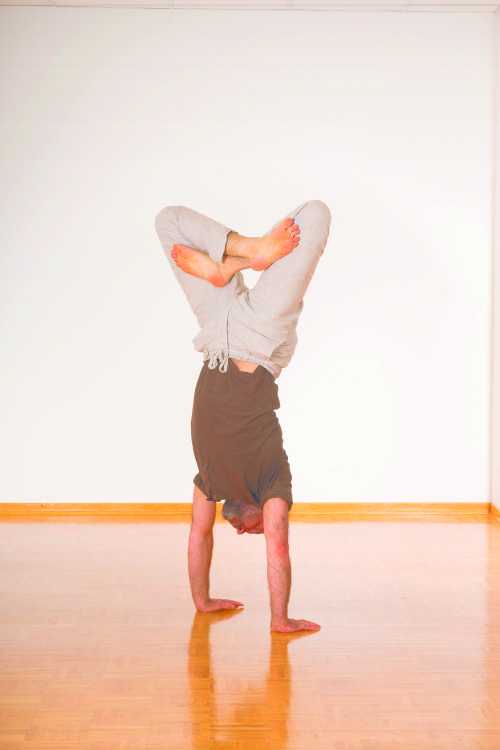

Lotus Seat
The «Lotus Seat», also «Padmasana» or Kamala-Asana (kamalasana). The Lotus — the plant that symbolizes enlightenment.
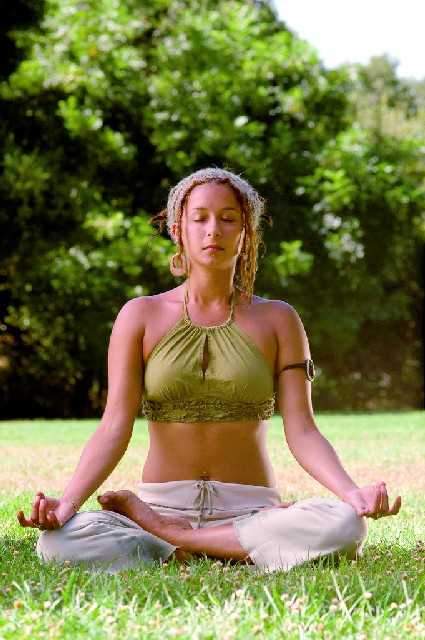
Probably one of the most famous Yoga Asanas. He is considered the optimal sitting posture for Meditation. This Asana is firm and stable and allows long and quiet sitting when properly executed. The «full Lotus Seat» is very advanced, but there are many variations and variations in which you will surely progress quickly through mindfulness and concentration. Saints from Hinduism or Buddhism are often depicted in the «Lotus Seat».
Table of Contents
1 Sukadev about Lotus Seat
2 Padmasana
2.1 The Meaning of Padmasana
2.2 Yoga Texts and Padmasanap
3 Tradition
4 Execution
5 Sitting Posture
5.1 Tip
5.2 Sit Variants
5.3 Video: Lotos Preliminary exercises with Lisa
6 Swami Sivananda about Lotus Seat
6.1 Method
6.2 Video: Advanced Sitting Postures for Meditation
6.3 Variations
6.4 Video: Lotus Seat (for Advanced !!!)
Sukadev about Lotus Seat
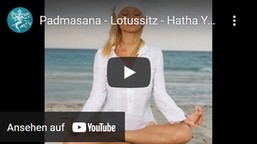
 |
 |
Padmasana
The Lotus Position or «Padmasana» is a cross-legged sitting position, which has its origin in the meditative practices of ancient India and in which the feet are placed on the other thigh respectively. Among the 84 Asanas in Hatha Yoga, this Asana is one of the most important that Shiva taught.
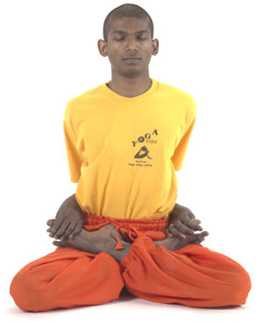 Bounded Lotus Seat, Baddha Padmasana
Bounded Lotus Seat, Baddha Padmasana
The Lotus Position resembles a lotus flower. Well-known depictions of the Lotus Position shows Shiva, the meditating ascetic god in Hinduism, or Siddhartha Gautama, the founder of Buddhism. An illustration of the Lotus Position was also found on an old seal in Harappa. «Padmasana» can be considered as a basic Posture Exercise for both the Meditation and to maintain the normal elasticity of the muscles that are connected to the pelvis and lower extremities.
The Meaning of Padmasana
«Padma» means Lotus in Sanskrit. In this Asana the leg position looks like a blooming Lotus. This Asana is of paramount importance in Yoga Practice because it is best suited for «Pranayama», Meditation and Concentration.
Yoga Texts and Padmasana
The «Padmasana» is one of the oldest known Asanas in history and was mentioned in the Yoga Yajnavalkya (200 years BC), the oldest surviving text with descriptions of Yoga Asanas. Almost all the Puranas, Itihasas and later Indian texts mention them volatile. It is also well-known in the Buddhist tradition (as evidenced by the iconic «Padmasana» Position of some Buddha statues).
Tradition
Even ancient Indian scriptures call the «Lotus Seat». The Gherandasamhita 2,8 (15th century) describes it like this:
Put the right foot on the left thigh and equally the left on the right; cross your arms behind your back and hold the big toes of your crossed feet with your fingers. Rest the chin on the chest and stare with the look on the tip of the nose. This Asana is called «Padmasana». It destroys diseases.
Yoga Asanas are mainly practiced for one reason: the body should be prepared for meditation. «Patanjali» says in his Sutras: «sthirasukham asanam» [|| 2.46 ||]. This means the Asana should be firm and comfortable. At that time it was related to the sitting posture in the form of «Padmasana», the only Asana depicted at this time. Today, this is true for any Asana, especially for sitting postures, which are the most stable among all Asanas. It is initially irrelevant whether the «Lotus Seat» («Padmasana»), the «Heel Seat» («Vajrasana») or another sitting position is taken.
Execution
The «Lotus Seat» is therefore particularly suitable for meditation, because it automatically gives a stable posture and the back can easily be kept straight. However, this Asana must be practiced long and carefully in order to be able to meditate relaxed for a long time in her. According to ancient scriptures, only wise ones attain the ability to dwell in the «Lotus Seat». In classical Hatha Yoga, however, «Siddhasana» is often considered higher than «Padmasana».
Exercising this Sitting Posture is tedious and often causes pain in the knees and back in the beginning. Therefore should never be forced, because otherwise it can lead to permanent damages. A simplified form is the «Half Lotus», in which only one foot is placed over the opposite leg. Not infrequently, the «Cross-Legged Seat» with the «Lotus Seat» mixed up, but this does not form a stable foundation for a long meditation.
Advanced Yogis are able to perform several Asanas, such as «Headstand», «Fish» or other Asanas out of the «Lotus Seat».
Sitting Posture
➳The head is in line with the spine. The chin and neck form a right angle, so that the neck becomes long. The jaw and facial muscles are completely relaxed. The tongue is loose in the mouth.
➳The hands are on the thighs. Preferably with the palms facing up, as this automatically opens the ribcage better. The fingers are loose or can be brought into a Mudra (here: variant of «Chin Mudra»).
➳The spine is in its natural, double S-shaped erection, so that the vertebral bodies are «stacked» with almost no muscle power. The coccyx, thoracic spine and back of the head form a (imaginary) straight line by this way. For this erection, it is advisable to sit with the buttocks about one-third on a pad, such as a pillow. The lower back is thereby on maximum in the natural hollow cross. Chin and throat form a right angle.
➳The buttocks and legs form the stable base of every Sitting Position, usually in a three-point support surface. To this stable base to ensure must the knees on the floor (as here in the «Lotus Seat») or the thighs on the feet (such as in the «Cross-Legged Seat» — «Sukhasana») are stored so that those can completely relax. With little flexibility, you can bring blankets or pillows under your thighs / knees. With the buttocks you tend to sitting on the Ischial humps. To do this, pull the buttocks apart with your hands backwards and outwards, for separating the buttock halves in this way.
➳The shoulders are completely relaxed and slightly oriented back and downwards.
➳The rib cage is well set up, but without going into the hollow back or falling into a hollow back.
Tip
To get a body feel for proper erection, you can practice a Cross-Legged Sitting Position on the wall. For that place your seat pad close to a wall so that the coccyx, shoulders and back of the head touch the wall. Now, you can also bring the lumbar spine to the wall by carefully raising up the pubis towards the chest. At the same time, the back of the head grows upwards on the wall, creating a slight double chin. The shoulder blades push down and back into the wall. So the goal of reaching a good erection of the spine and stretch the entire back extensors.
Sit Variants
Which Seat Variant is concretely taken is not crucial for a good Meditation. Although some Seat Variants have certain advantages. For example, in the «Perfect Position» («Siddhasana»), in which through the lower heel on the dam the «Muladhara Chakra» is stimulated. The «Lotus Seat» («Padmasana») is considered the most stable Seat Variation and is thus particularly suitable for long Meditation Sessions. In the «Heel Seat» («Vajrasana») automatically opens the stomach cap, so that he is the preferred Sitting Posture for eating. The «Cross-Legged Seat» («Sukhasana») is particularly suitable for beginners with not yet so good flexibility. However, it is crucial for a Meditative Seat Posture that it can be comfortably taken over a long period of time.
Video: Lotus Pre-Exercises with Lisa

 |
 |
Swami Sivananda about Lotus Seat
Padma means Lotus. When the Asana is shown, their external appearance is somewhat like a Lotus. Yet the name is «Padmasana». Likewise, the Asana is known by the name «Kamalasana» (kamala in Sanskrit means Lotus as well). Within the four Positions set for «Japa» (Mantra Recitation) and «Dhyana» (Meditation), this is the predominant one.
For the introspection (contemplation) this is the most suitable. «Rishis» like Geranda, Sandilya and others talking extremely good about this basic Asana. People who live in a householder/Grihasta state can take these Asana well; even women can sit in that Position. «Padmasana» is suitable for haggard people as well as for young people.
Method
Sit with legs outstretched on the floor. Then place the right foot on the left thigh and the left foot on the right. Put your hands on your knees.
You can do a finger lock (Mudra), and then hold those closed hands over the left ankle. This is very pleasant for some people. Or you can put your left hand over your left knee and your right over your right knee. Thereby the palms are pointing upwards and the forefinger touches the middle of the thumb («Chin Mudra»).
Video: Advanced Sitting Postures for Meditation
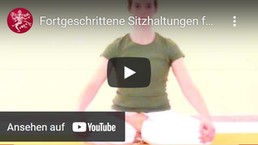
 |
 |
Variations
➳Ardha-Padmasana (Ardha means «half» in Sanskrit): If you cannot put both feet on your thighs at the beginning, just keep one on one thigh for some time and the other foot on the other thigh for a while. After a few days of exercise, you will be able to put both feet on your thighs. This is the «Half Lotus» or «Ardha-Padmasana».
➳Virasana: Sit comfortably. Place the right foot on the left thigh and the left foot below the right thigh. Lord Gauranga (the Golden Avatar) usually used this seat for his Meditation. That's a comfortable position. «Virasana» means «Hero Posture».
➳Parvatasana («Mountain Pose»): Take in the ordinary «Padmasana». Kneeling lift your hands upwards. This is «Parvatasana». Put a thick blanket on the floor and then do the Asana so you cannot hurt yourself. At the beginning, hold on to a stool or a bench for a few days until you can keep your balance. Then you can lift your arms upwards. Seat in the «Hero Seat» («Virasana»), lift the arms upward and be fixed, stable and calm in your Position.
The following Asanas are also sometimes called «Parvatasana»:
➳Samasana (same Position): Put the left heel on the beginning of the right thigh and the right heel on the beginning of the left thigh. Seat comfortable. Tie either left or right. This Position is called Samasana.
➳Karmukasana: Sit in the traditional «Padmasana». Grasp the right big toe with the right hand and the left with the left. In this way make a cross with your hand and elbow.
➳Utthita Padmasana: Sit in «Padmasana». The palms are on the sides on the floor. Raise the body slowly. There should be no jerk. The body should not tremble. Hold your breath as long as you stay in this upright position. When you come down, you can exhale. People who cannot perform «Kukkutasana» can this practice. The hands are left at the sides with this Asana, while they are held in the «Kukkutasana» between the thigh and calf muscle.
➳Baddha Padmasana: Some people call this Posture «Padmasana» genannt.
➳Urdhva Padmasana (urdhva in Sanskrit means «directed upwards»)
➳Lolasana
➳Kukkutasana
➳Tolangulsana
Video: Lotus Seat (for Advanced !!!)

 |
 |

